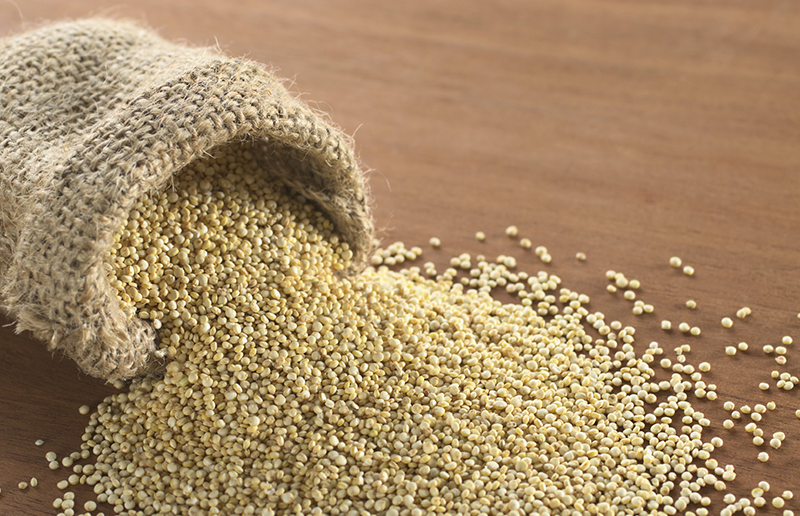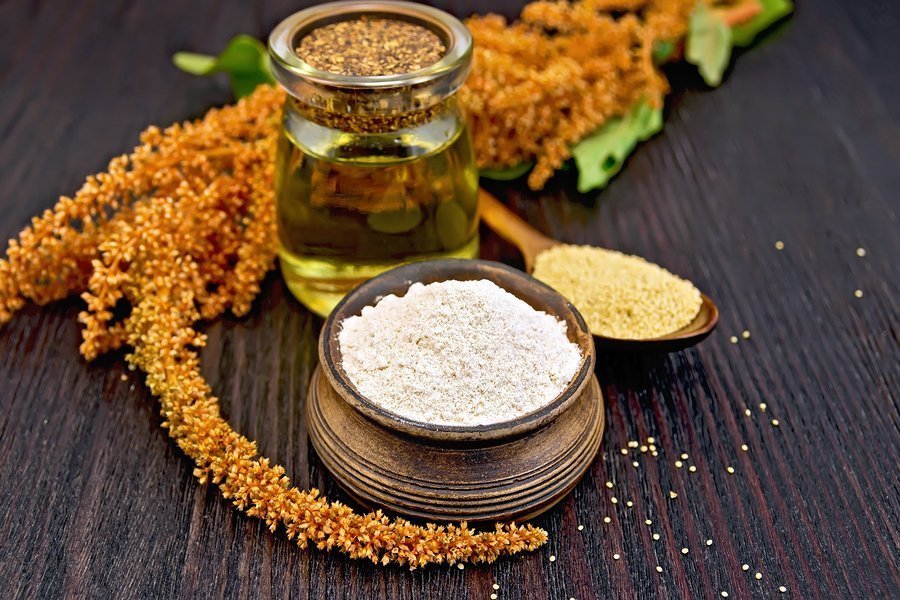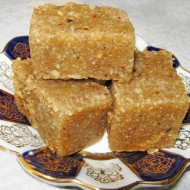Useful and medicinal properties of amaranth seeds for humans
Content
Composition and nutritional value of amaranth seeds
Those who spent the summer in the country or in the village with their grandmother will surely remember a tall plant with strong elastic stems and a gorgeous lilac "corn" that pleasantly crumbled in the hand. Very often, small quantities of amaranth were given to cattle to improve digestion and general condition.
Amaranth, or schiritsa, was forgotten for a long time and supplanted by the cereals we are used to. But today on sale you can find not only plant seeds, but also flakes, flour and oil from it. "Food of the Gods" contains significantly more protein than wheat and soybeans. In addition, it contains an almost complete set of amino acids, making the plant one of the most effective biological nutritional supplements for vegetarians.

The composition of amaranth is enriched with iron, magnesium, potassium and calcium, includes a unique component squalene and dietary fiber. Recently, scientists have identified another element in the composition of the culture, which is called amaranthine. It helps to accelerate the work of all functional systems of the body.
100 g of amaranth contains 371 kcal.
Beneficial and nutritional properties
It is very difficult to overestimate the benefits of amaranth. It has a number of advantages that are very difficult to find in the composition of one plant:
- a large amount of protein, as well as a full set of amino acids and organic substances guarantee that the body is provided with everything necessary for a healthy and long life;
- the presence of squalene ensures the synthesis of vitamin D;
- dietary fiber helps to effectively cleanse the intestines of toxins and improve digestion;
- The presence of nutrients and a high percentage of protein ensures fast satiety at the lowest doses, which eliminates the risk of overeating and is great for those who are watching the weight;
- promotes rapid saturation of blood with oxygen and tissue regeneration;
- the leaves and sap of the plant are an excellent source of easily digestible protein, vitamins and minerals;
- regular use helps to strengthen the cardiovascular system, prevent insomnia, senile dementia, reduce the risk of tumors and ovarian cancer;
- the rich content of folic acid helps to eliminate inflammation of the internal organs, in particular the genitourinary system, respiratory system and skin problems;
- prevents premature graying;
- lowers blood sugar and cholesterol levels.

Video "Properties and benefits of amaranth"
This video describes the features of using amaranth seeds.
How to grow amaranth at home
Sprouted crop seeds have powerful antioxidant properties. And it's not so difficult to germinate seeds on your own, you just need to strictly follow the recommendations.
Germinating seeds
- Fertile soil preparation. You can buy special soil for cereals in the store or prepare it yourself from sterile sand, earth and humus.
- For cultivation, you need a container with a height of 10 cm, always with drain holes so that moisture does not stagnate.
- Pour the soil into the container so that no lumps form.
- Mix seeds with a small amount of soil and spread in a thin layer over the surface of the soil in a container.
- Irrigate the soil with water from a spray bottle or a spray bottle.
- Cover the container with cling film to create the required microclimate.
- Place crops on a windowsill on the sunny side, as amaranth loves sun and warmth.
The most useful sprouts for consumption as a food product are several centimeters high (up to 4 cm).

Heat treatment of seeds
Most of the nutrients of the culture simply disappear when heat treated above 40 ° C. Therefore, for processing, you need to choose a temperature below this indicator. Manual squeezing will help to save all the nutrients. You can get oil by grinding the seeds in a mortar.
Application of amaranth seeds
Amaranth is beneficial for both oral and external use. The main thing is to preserve the greatest possible amount of nutrients.
In folk medicine
Often folk remedies cannot compete with chemicals, but they also bring much less harm to the body. Therefore, amaranth is often used in combination with traditional therapy or as a prophylaxis, but only after consulting a doctor. Amaranth products are used for:
- strengthening immunity and increasing the body's resistance to viral and colds;
- fight against neoplasms and the growth of cancer cells (in combination with traditional therapy);
- restoration of normal functioning of the gastrointestinal tract, treatment of gastritis and ulcers;
- healing wounds and burns;
- treatment of diseases of the oral cavity (stomatitis, gum disease, etc.);
- restoration of liver cells, strengthening of the heart and blood vessels;
- restoration of the menstrual cycle;
- treatment of psoriasis, eczema, fungal inflammation;
- strengthening potency, preventing the development of adenoma.

In cosmetology
Amaranth oil does an excellent job of neutralizing possible inflammation and promotes regeneration. Therefore, it is great for treating problem skin, acne. It can also be used as a moisturizer and skin protectant.
The lysine content promotes collagen synthesis, which fights skin aging and promotes cell regeneration. Therefore, amaranth is often included in masks and creams for the face and skin.

In dietetics
Rapidly digestible protein, dietary fiber, amino acids contained in the shirin, contribute to the rapid saturation of the body. At the same time, the calorie content of the product is rather low. If you follow a diet or proper nutrition, amaranth can completely replace the use of various varieties and types of cereals. They are often substituted for expensive quinoa.
In cooking
For cooking, you can use not only amaranth oil and seeds, but also foliage. The foliage is a great addition to a salad. Can be used to prepare side dishes and soups. Amaranth bread is baked from flour, which is much healthier than wheat bread.
You can make not only a delicious porridge, but also a dessert from shiritsa, and can also be used as an ingredient for salads or smoothies:
- Warm salad with amaranth. For the salad, you need to boil amaranth and quail meat. Separate the quail meat from the seeds and pour it into a container for amaranth. Add grated goat cheese, cherry tomatoes and herbs to taste. We use avocado or olive oil for dressing.
- Smoothie with amaranth. Peel the melon and orange, cut into small pieces and grind in a blender. Add a tablespoon of amaranth seeds to the mass and beat thoroughly. Such a healthy drink should be consumed for breakfast or in the evening instead of dinner.
- Porridge
- Biscuit
- Smoothie
- Halva
Selection and storage of seeds
It is better to purchase an organic certified product. In this case, the seeds should have a pale yellow color and a smooth surface. They are very small and more expensive than other grains.
Store amaranth in a tightly closed container in a cool, dry and dark place. A great option is packaging with a clasp.
Possible harm and contraindications
With an abundance of nutrients, amaranth can also have a negative effect on the body. Therefore, it is not recommended to use the product for people suffering from kidney disease, rheumatoid arthritis, various chronic diseases. You should not eat the seeds raw - they are not digested. Also, heating of the product is not allowed.
You should not blindly follow the fashion trends of proper nutrition - before using amaranth, be sure to consult with your doctor. Also, watch the dosage of the product, because excessive consumption of even the most useful products can have negative consequences.




